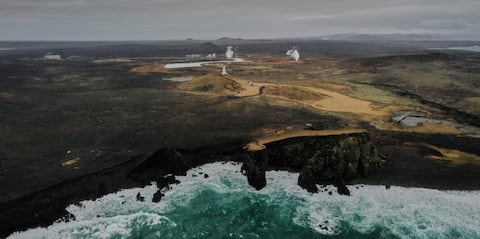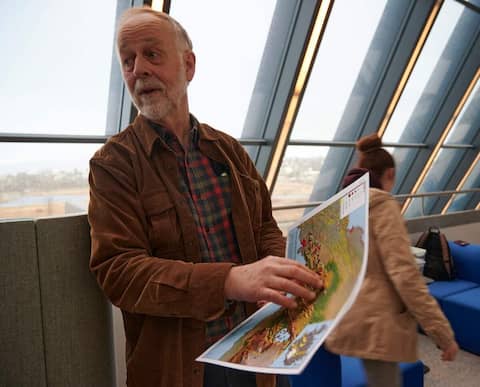Rash, no rash? On alert since last week, Icelandic vulcanologists are trying to unravel the mysteries of an unusual volcanic activity near Reykjavík, in a peninsula that has remained dormant for nearly eight centuries.
Its slightly disturbing conical shape is the first relief that tourists observe when arriving from the airport in Iceland: 25 kilometers from the capital, the small volcanic mountain Keilir and its surroundings have been scrutinized for several days to know if the lava is going – or not – come out of the ground.
A hypothesis deemed very likely in the middle of last week after a series of a multitude of small earthquakes close together linked to underground influxes of magma, but which now seems more uncertain.
“It should always be taken seriously,” says Thorbjörg Ágústsdóttir, seismologist at the public geoscience research institution ISOR.
According to the latest data, the magma is only about a kilometer from the surface.
“It’s really very close,” concedes Thorvaldur Thórdarson, a vulcanologist at the School of Engineering and Natural Sciences.
According to specialists, a possible eruption would occur via a fissure located between Keilir and the nearby mountain of Fagradalsfjall, in an uninhabited area.
Unknown warning signs
It has been more than a year since signs of revival have been observed in the area, but it was a large magnitude 5.7 earthquake on February 24 that signaled a possible major episode.
AFP
An aerial view taken on February 28, 2021 shows the lighthouse and geothermal power plant near the town of Grindavik on the Reykjanes Peninsula
Since then, nearly 34,000 tremors have been detected in the Reykjanes peninsula on the Icelandic Meteorological Institute’s seismic network, unheard of since digital monitoring began in 1991.
After two days of calm, seismic activity intensified overnight from Tuesday to Wednesday.
“As we have learned, this can take place in phases,” warns Sara Barsotti, volcanic risk coordinator.
The largest and most active volcanic region in Europe, Iceland has an exceptional surveillance network on its territory.
But mysteries remain, especially when the last eruption in this region in the southwest of the island dates back to the 13th century.
“We don’t know how the volcanic systems on the Reykjanes Peninsula prepare for an eruption. What types of early warning signs are associated? How long does it take? We don’t know because we have never been able to measure it, ”admits Thorvaldur Thórdarson.
The only certainty: in the event of an eruption, it would be a limited lava flow with little ash, according to vulcanologists.
“Eruptions in this volcanic area are generally quite peaceful,” says Páll Einarsson, a geophysicist at the University of Iceland’s Institute of Science. “These are lava outpourings and most of them not really big. “
AFP
Páll Einarsson, geophysicist
A scenario similar to that of the now famous Icelandic volcano Eyjafjallajökull, whose prodigious dust projections in 2010 had paralyzed air traffic for weeks in Europe, is therefore not to be feared.
Geological evidence shows that the small peninsula rests on five volcanic systems, which seem to come to life in a coordinated fashion every … 800 years on average.
However, the last period of volcanic activity in this region extended over three centuries with several eruptions sometimes lasting more than a decade.
“We may be heading for a new period of eruptions on the Reykjanes peninsula,” Thorvaldur Thórdarson speculates.
Iceland has already been confronted with the awakening of an inactive volcanic zone: one morning in January 1973, lava fountains surprised the inhabitants of the island of Heimaey on the Vestmann archipelago in the south of the country, which n ‘had known no eruption for 5,000 years.
A few months ago, it was more the Grímsvötn, under the Vatnajökull glacier in the south of the island, that was talking about him.
Scientists said last summer that Iceland’s most active volcano was preparing for its next eruption. But this has not yet happened.

